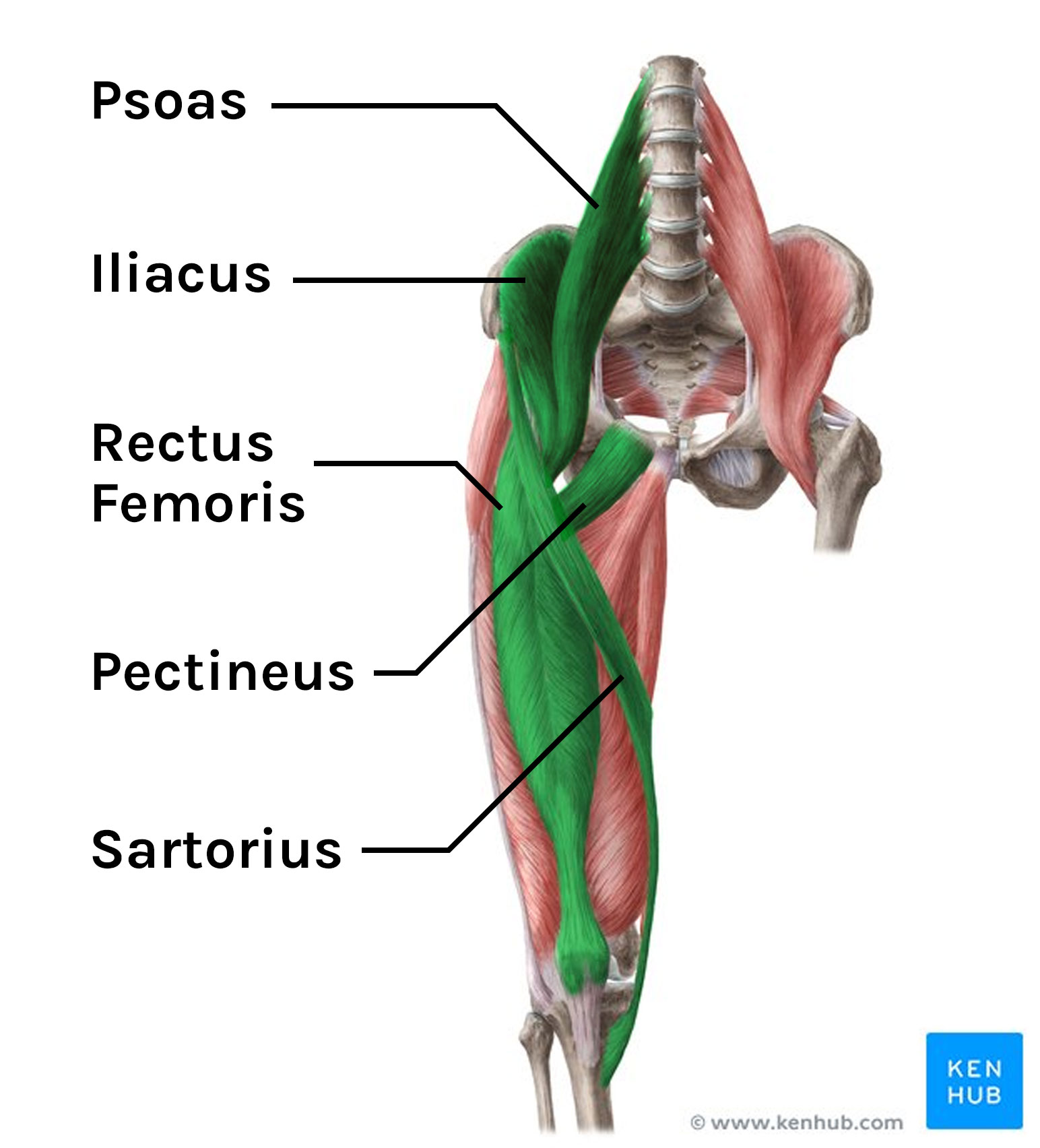hmi105 - hip, gluteal region and thigh
1/40
There's no tags or description
Looks like no tags are added yet.
Name | Mastery | Learn | Test | Matching | Spaced |
|---|
No study sessions yet.
41 Terms
things go through the greater sciatic foramen to where?
To the gluteal region and posterior thigh (i.e. sciatic nerve, piriform muscle, pudendal nerve)
things go through the lesser sciatic foramen to where?
to perineum and gluteal region (i.e. pudendal nerve)
things go through the obturator foramen to where?
to medial thigh (i.e. obturator nerve, vessels)
things go below the inguinal ligament to where?
to anterior thigh (i.e. femoral artery, nerve and vein)
What are the functions of the hip?
Both hip and knee joints are extended in standing position due to joint structure and ligaments, requiring minimal muscle effort and conserving energy.
Hip adduction minimizes lateral shift in the centre of gravity (helps maintain balance without side-to-side movement)
Rotation allows for greater steps
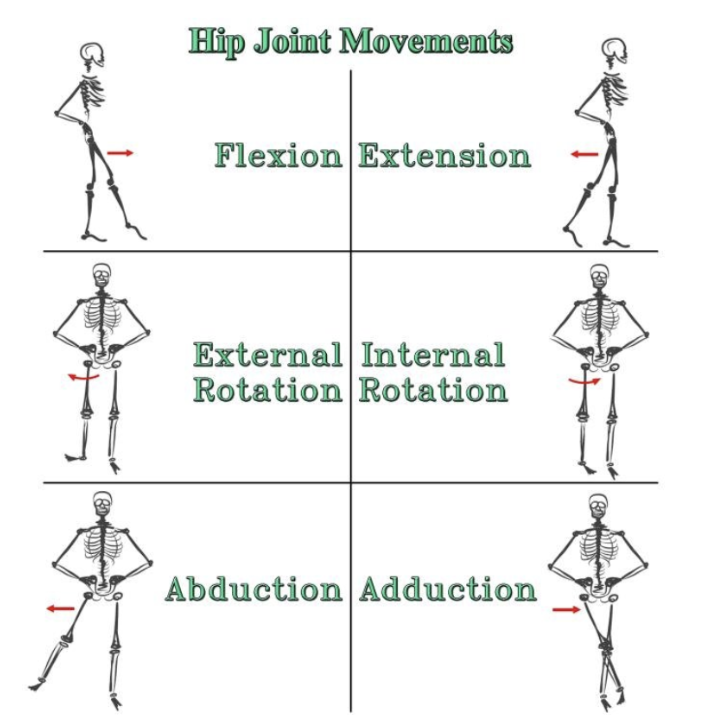
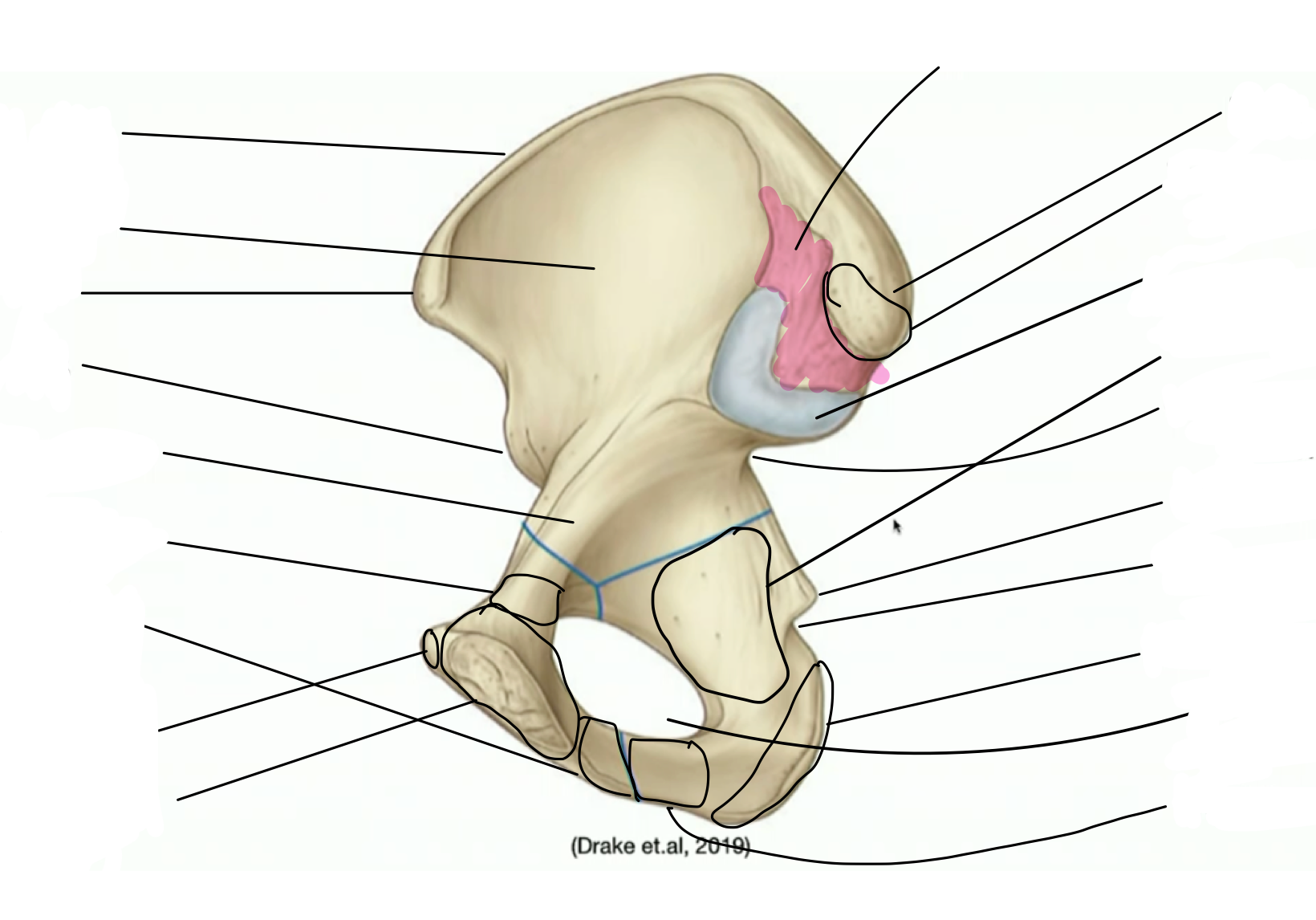
Label the pelvis
the blue part is the auricular surface of the illium

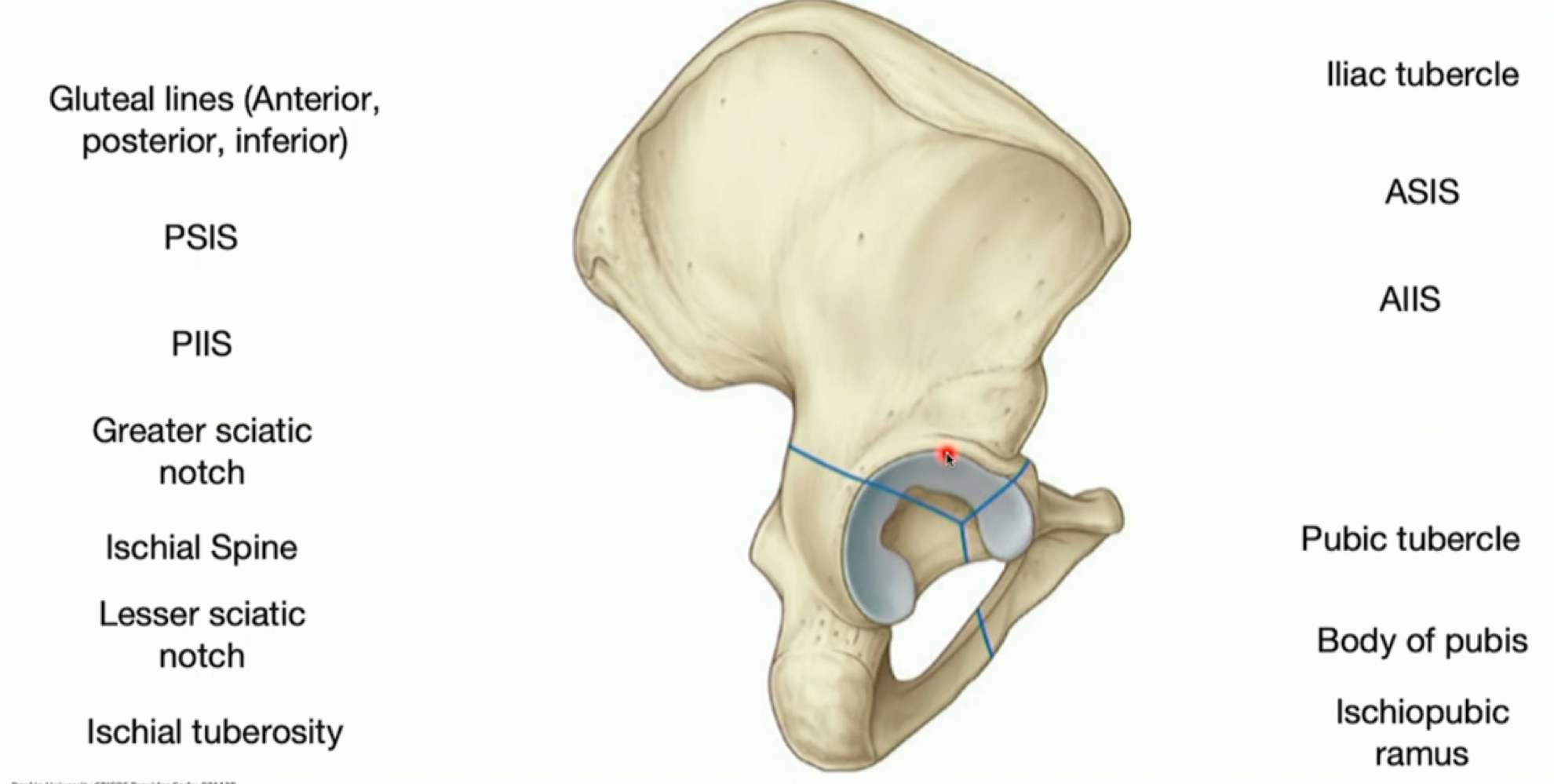
label the pelvis; additionally label the gluteal fossa, acetabulum notch and fossa.
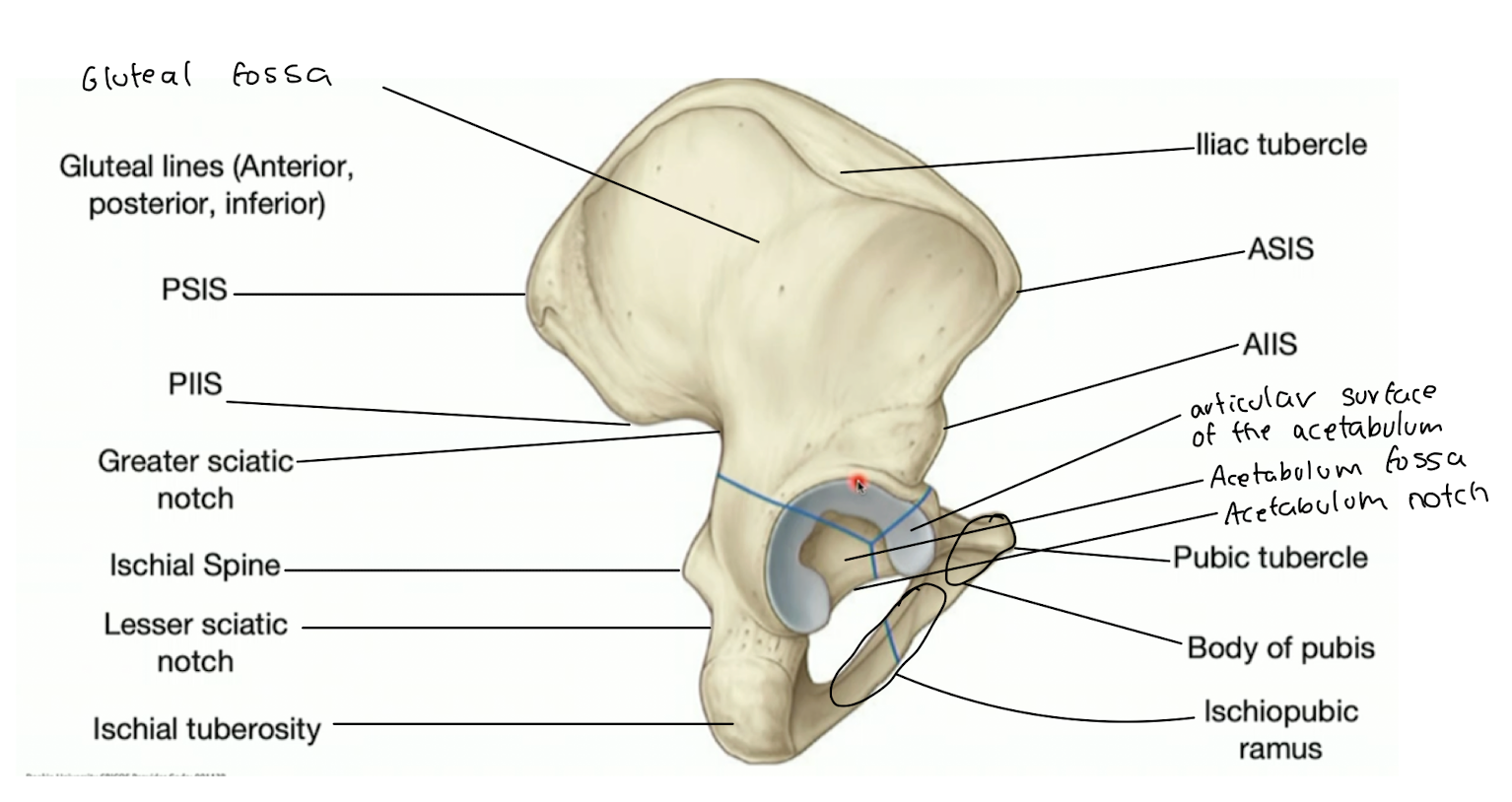

Label the proximal femur
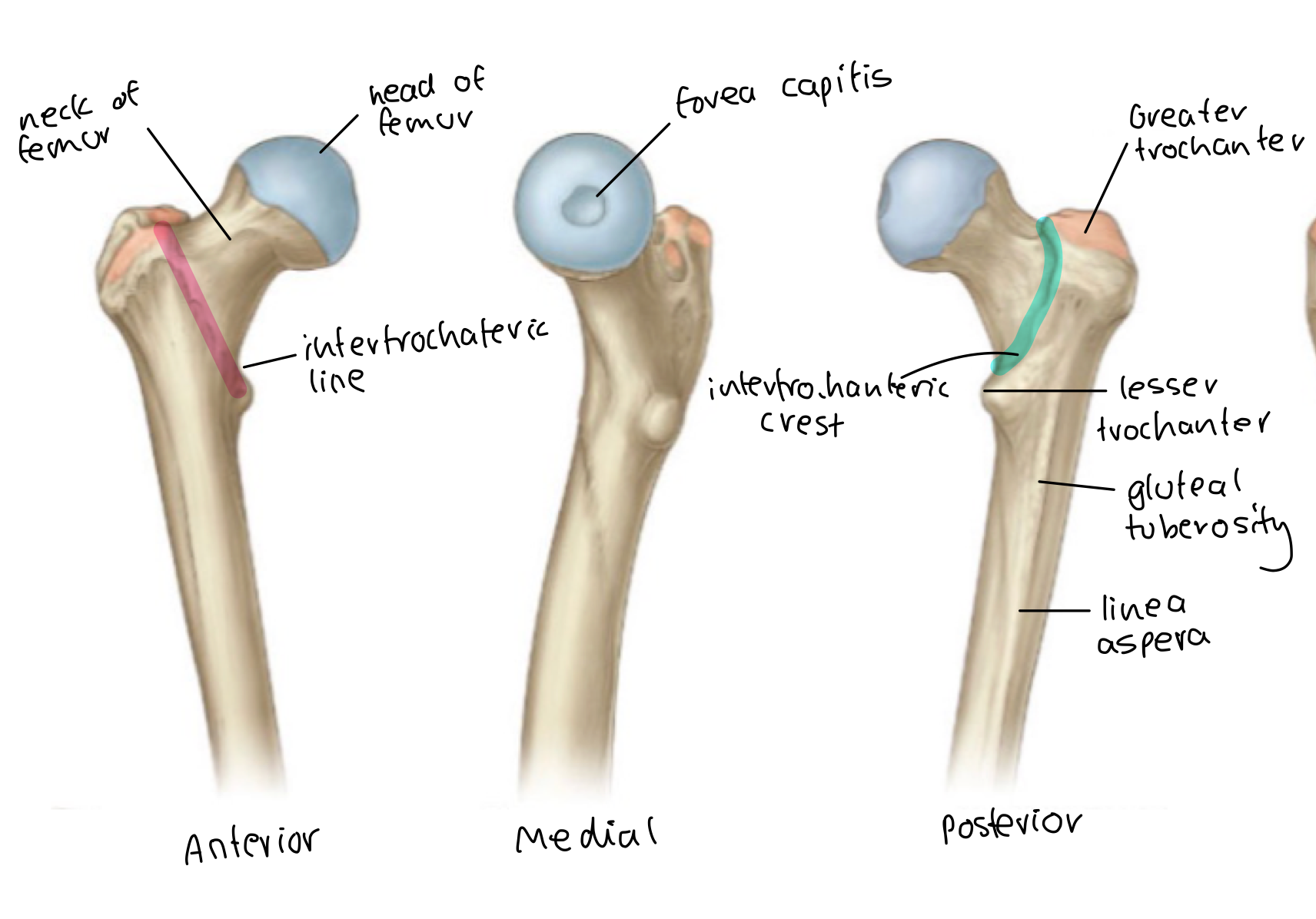
Normal inclination and torsion angle of the femur
inclination: 120 degrees
torsion:15-20 degrees

why do we internally rotate the leg when we take a picture of the pelvis?
due to the torsion angle, it helps to get the femoral neck in frame.
importance of femoral neck inclination
increases ROM and makes sure the greater trochanter doesn't get too close to the acetabulum when abducting and adducting.
does the greater trochanter sit posterior or anterior to the femoral head?
posterior
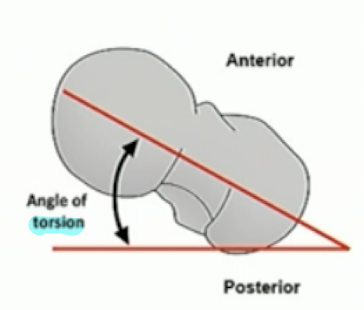
what muscles attach to the lesser trochanter?
illacus and psoas
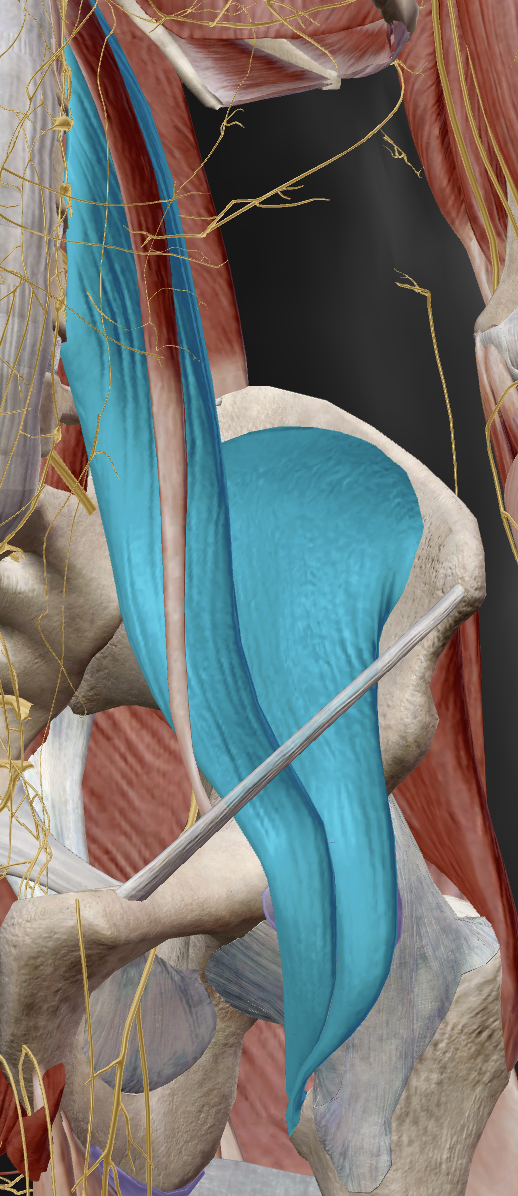
where does the acetabulum labrum sit and what is it’s importance?
coats the upper surface of the lunate surface
More coverage of femoral head and improve congruency
overview of how the ligament and artery of head of femur gets to femoral head.
Ligament to the head of the femur gives passage to the artery of ligament of head which branches from the obturator artery through the acetabular notch (foramen).
pathway to artery of ligament of head starting from internal illiac.
Internal illiac artery → obturator artery → acetabular branch of obturator artery → artery of ligament of head
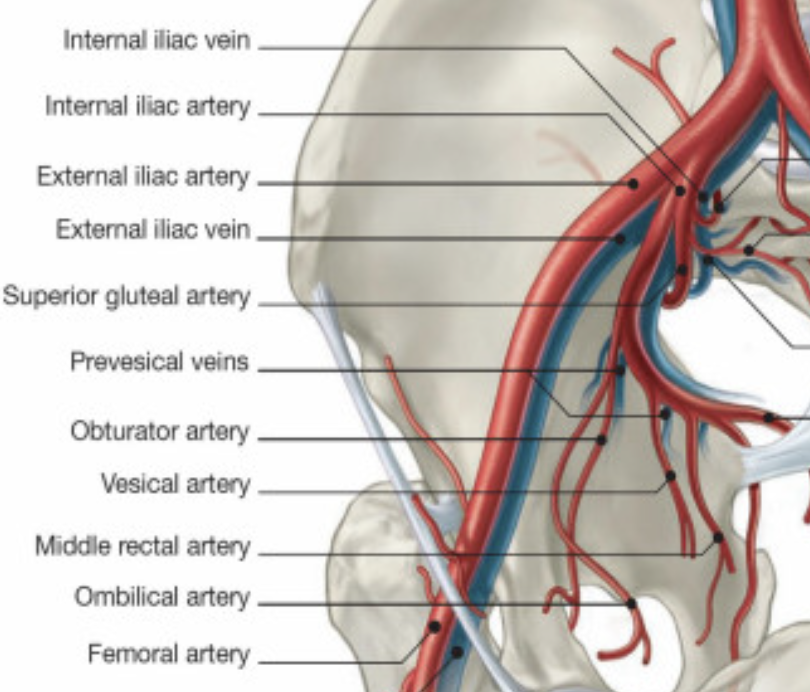
what is the blue anatomy?
fibrous capsule - inside this capsule is intracapsular, outside is extracapsular
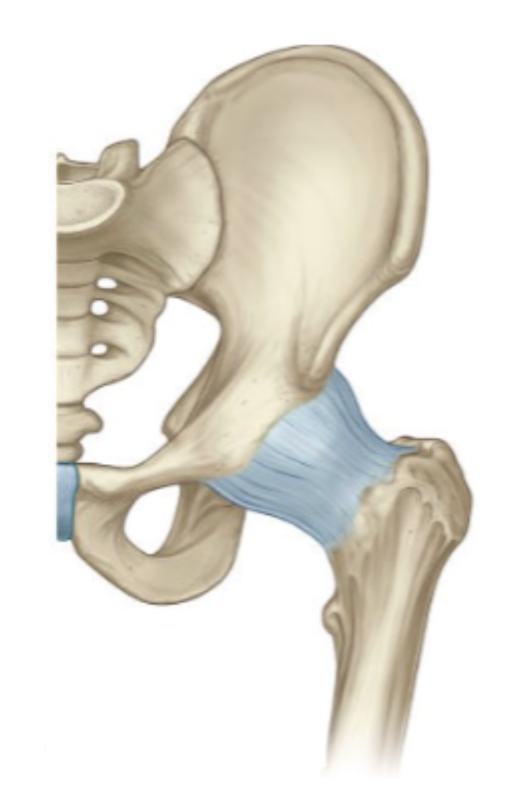
Ligaments in the hip joint and what they do
restrict extension
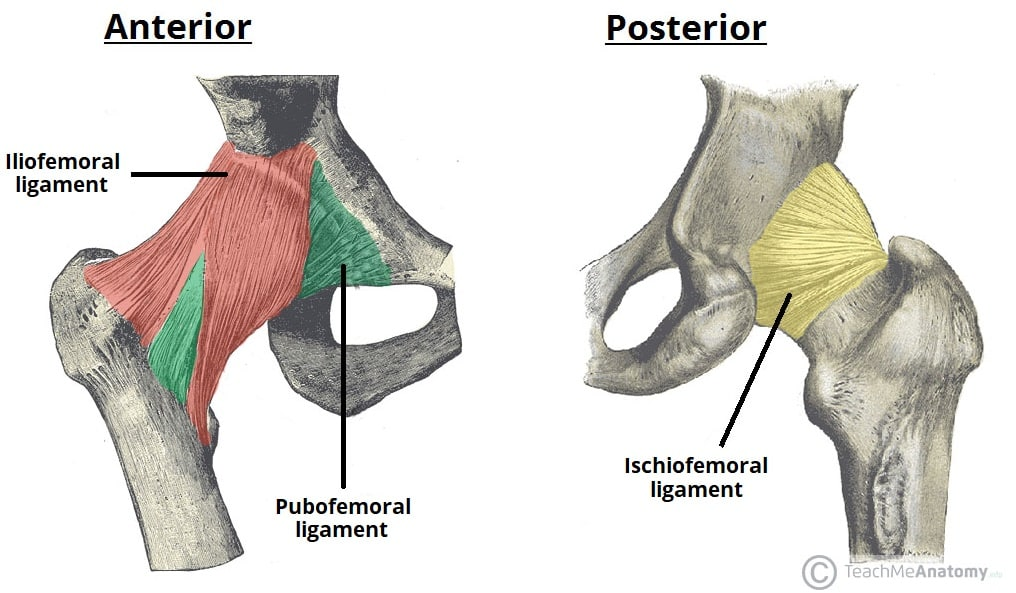
ROM at hip joint
Flexion, extension (sagittal plane)
Adduction, abduction (coronal plane)
Rotation (transverse plane)
Circumduction - combination all the movements

what goes through the greater sciatic foramen?
Pudendal nerve
Piriformis muscle
Sciatic nerve
what goes through the lesser sciatic foramen?
access to the perineum
Pudendal nerve
obturator internus
Sacral dimple is at the same level of what?
PSIS
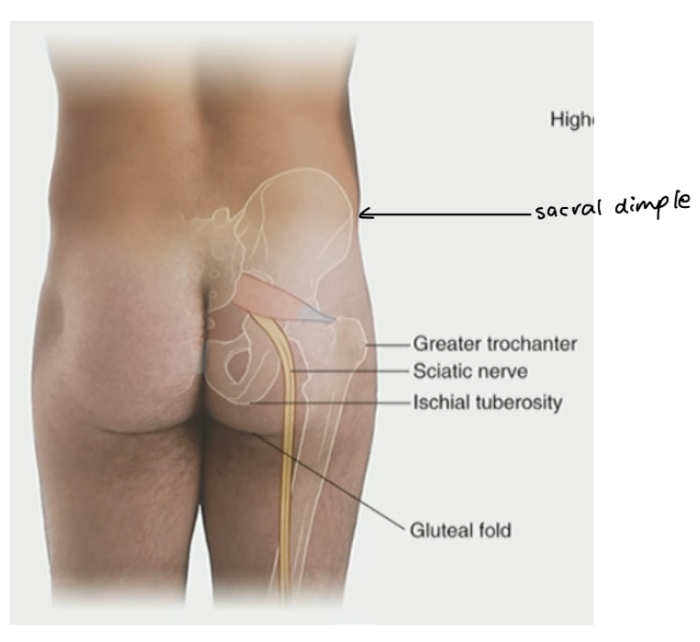
which
responsible for extending and abducting the hip

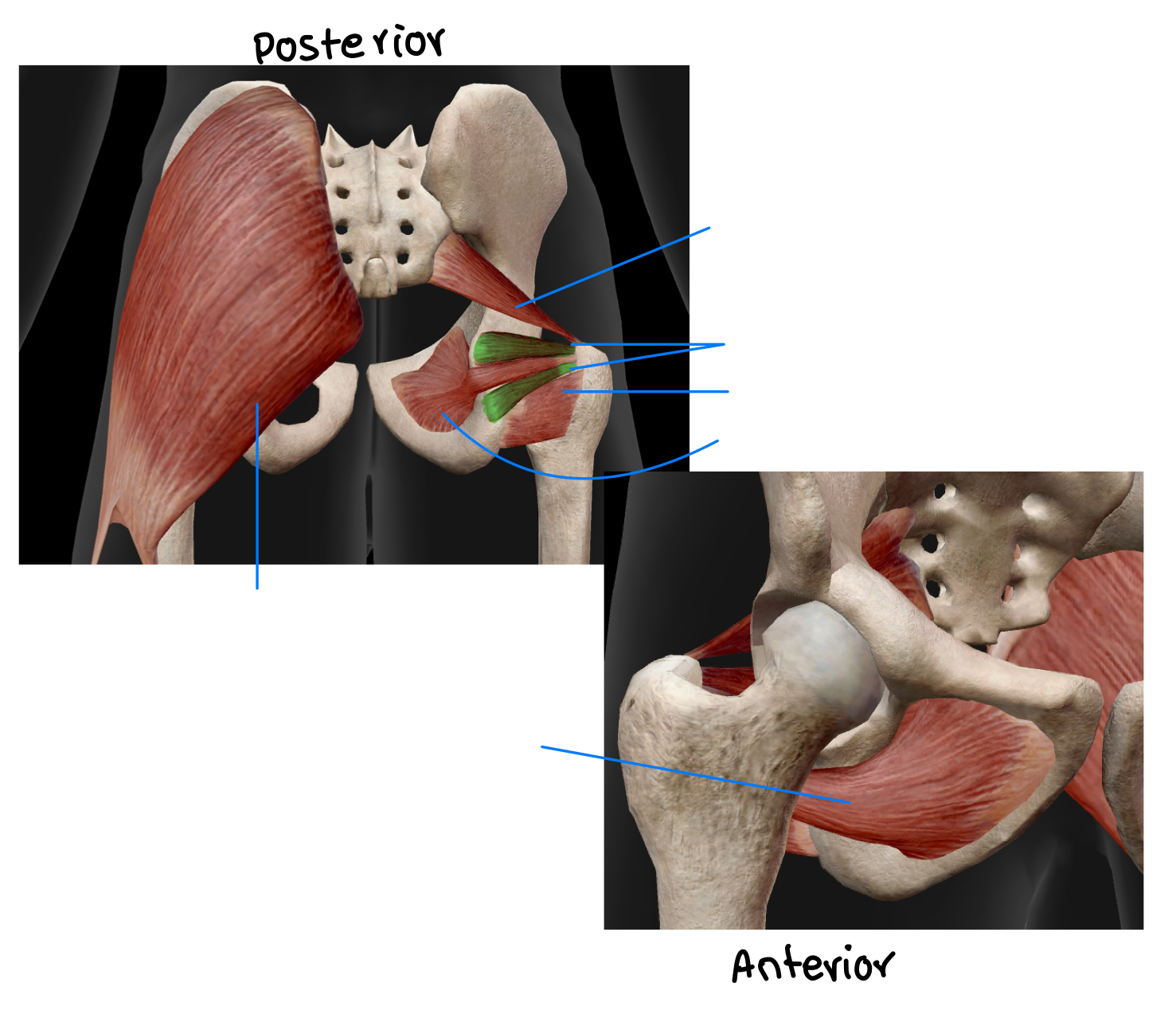
Which muscles are responsible for lateral rotation of the hip?
Gluteus maximus
Piriforms
Superior/inferior gamelli
Obturator internus/externus
Qaudratus femoris

what are the 3 regions of the thigh?
anterior, medial and posterior compartments
muscles and supply of nerve as well as attachment points of the anterior thigh
illiacus and psoas
illiacus and psoas major attach to lesser trochanter
Quadricep muscles
rectus femoris
attaches to the AIIS - avulsion
vastus medialis
vastus intermedius
vastus lateralis
Sartorius
attaches to ASIS - avulsion
Protects femoral artery
Supplied by the femoral nerve
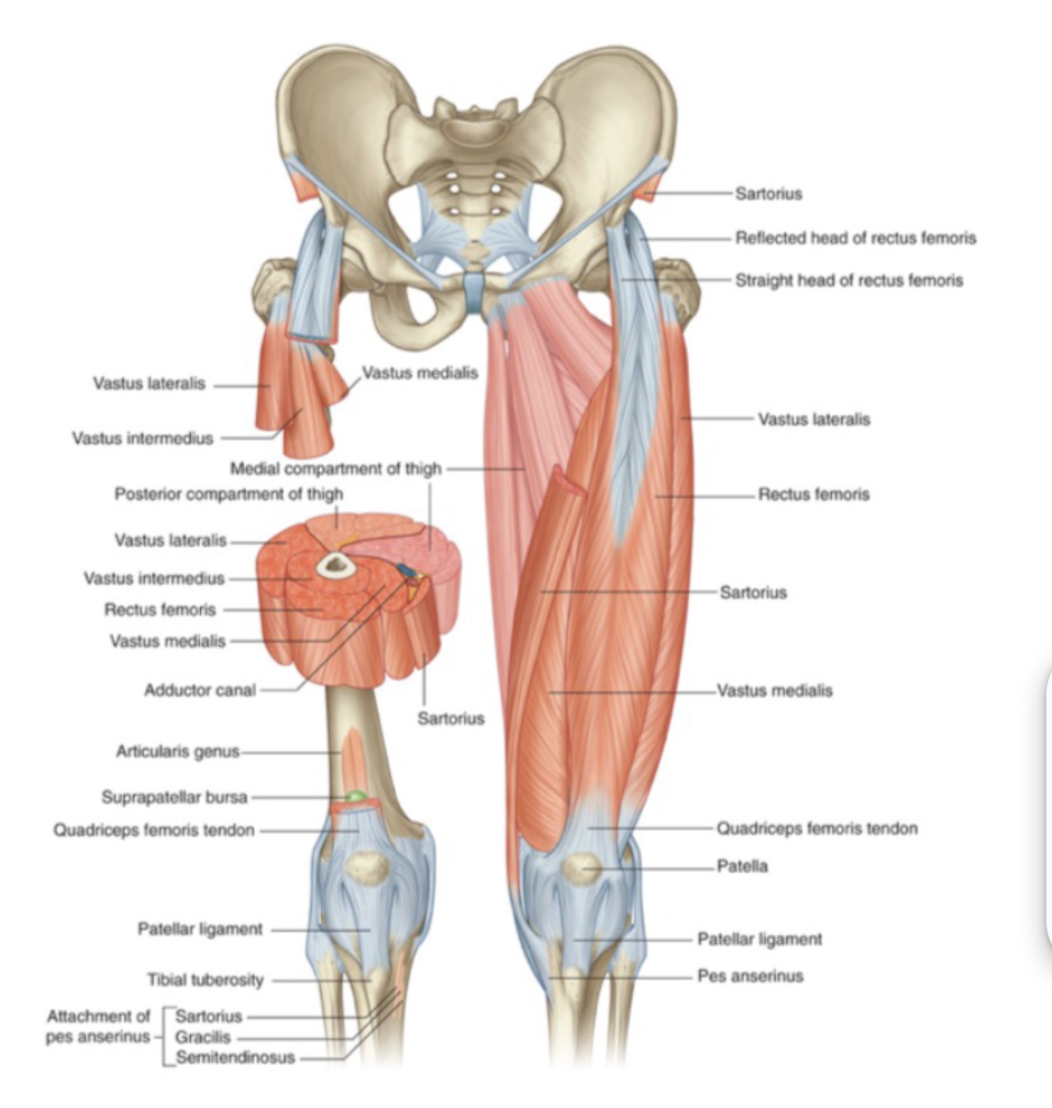
muscles and supply of nerve as well as attachment points of the medial thigh
Obturator externus
Adductor group
Adductor longus
Adductor brevis
Adductor magnus
Gracilis
Pectineus
All attach relatively to the pubis
Innervates by the obturator nerve
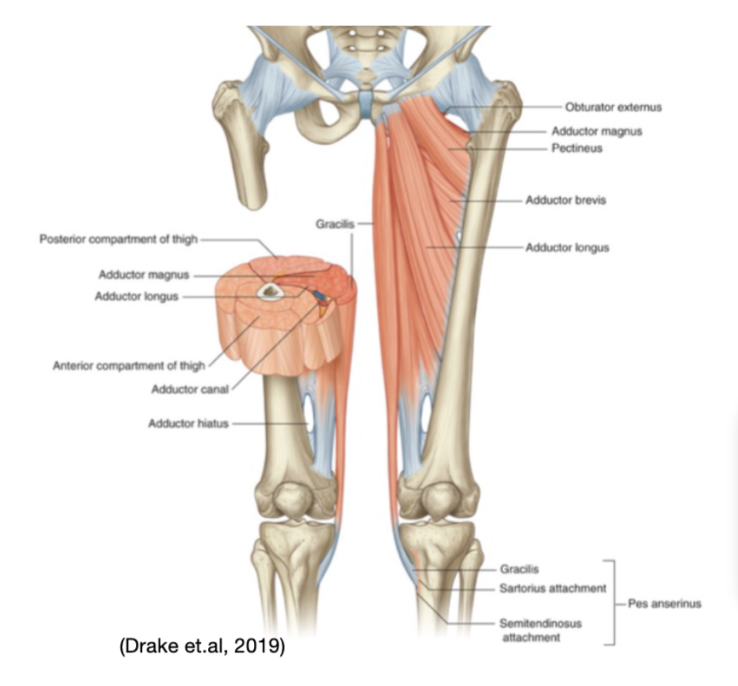
what landmark causes the superficial femoral artery to become popliteal artery?
Superficial femoral artery changes to popliteal fossa after it goes into the adductor hiatus posteriorly and turns into popliteal artery. This hiatus is found on the adductor magnus.
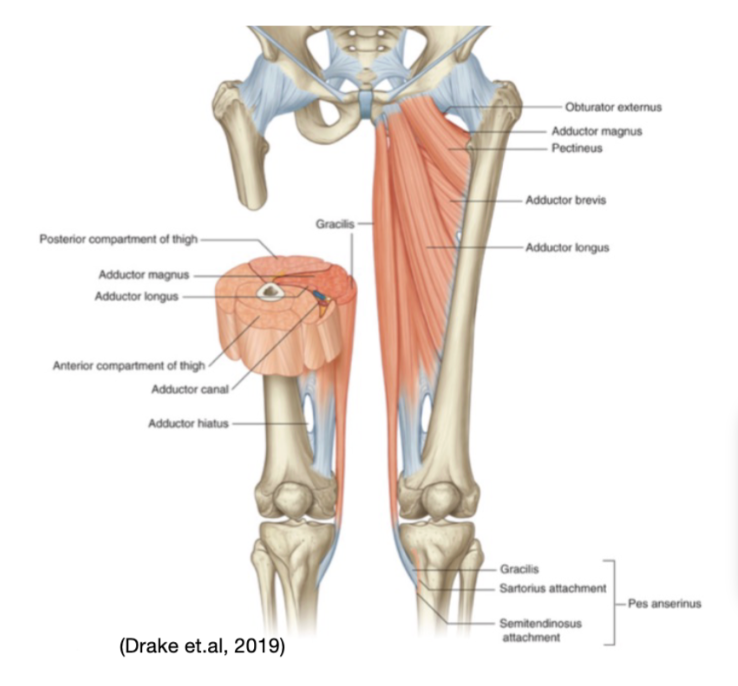
muscles and supply of nerve as well as attachment points of the posterior thigh
Three large hamstring muscles
Hamstring portion of adductor magnus
Semitendinosus
Semimembranosus
All attach to the ischial tuberosity - avulsion
Innervates by the sciatic nerve

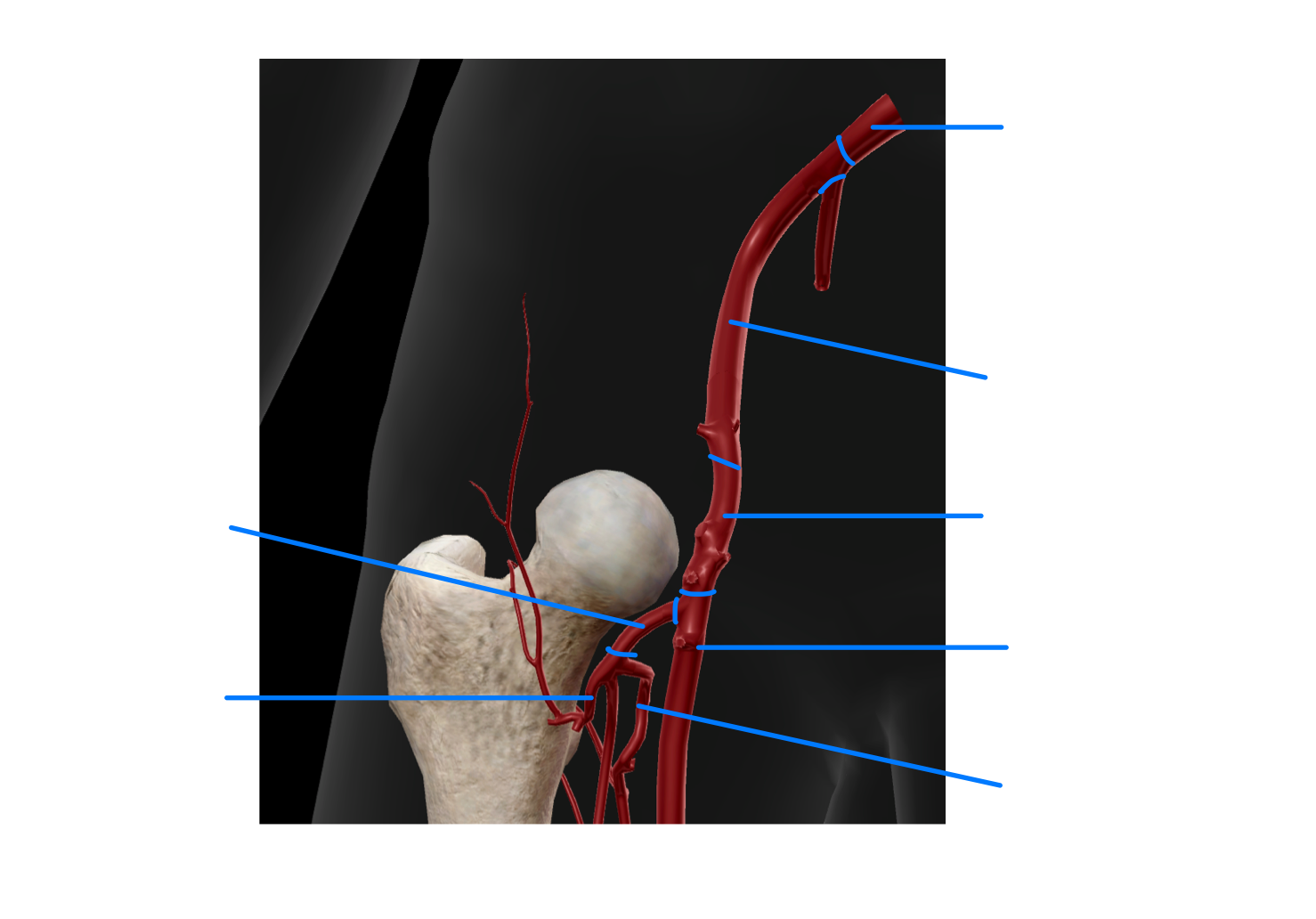
Main blood supply to femoral head and neck pathway starting from common illiac artery
Common iliac artery - external iliac artery - common femoral artery - deep femoral artery - lateral/medial circumflex artery - reticular arteries supplies to the neck and head of the femur
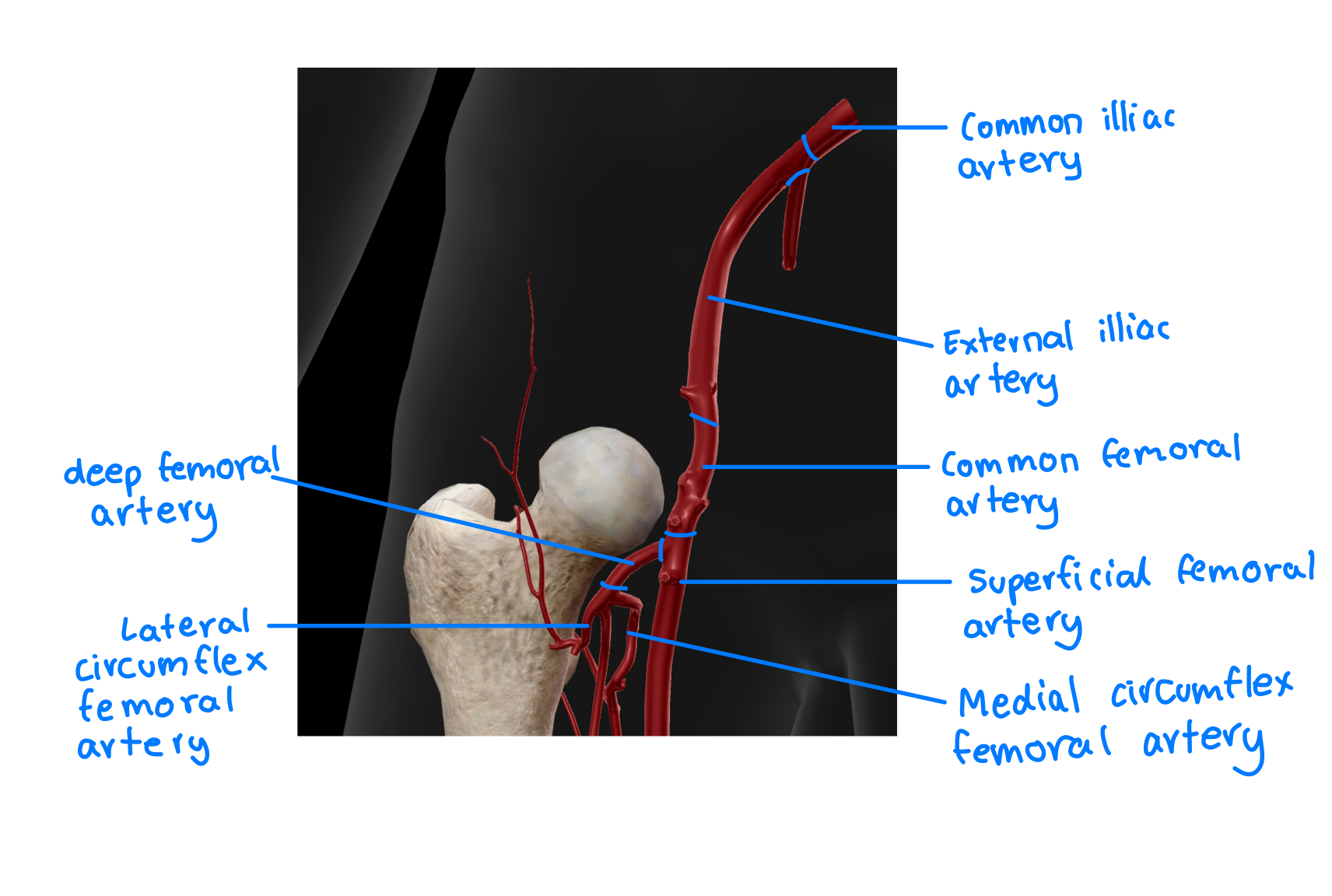
What location of the neck of femur fracture is more prone to AVN?
Neck of femur fracture more proximal increases AVN

Borders of the femoral triangle
Superior - inguinal ligament
Lateral - sartorius
Medial - Adductor longus
Contents of the femoral triangle going from lateral → medial
Nerve, Artery, Vein, Lymphatics
what is meant by the term avulsion fracture?
a bone fracture caused by tendon/ligament pulling a piece of bone away from the main body
why are pelvic avulsion fractures more common in young patients?
due to the presence of apophysis in the pelvis which are weaker than surrounding bone, meaning they can be pulled off more easily by ligaments and tendons
What is apophysis?
bony outgrowth that serves as attachment points for ligaments and tendons
what muscles attach to the greater trochanter?
Gluteus medius
gluteus minimus
piriformis
obturator internus
superior/inferior gemellus
What muscles are responsible for abduction at the hip?
tensor fascia latae
gluteus medius
gluteus minimus
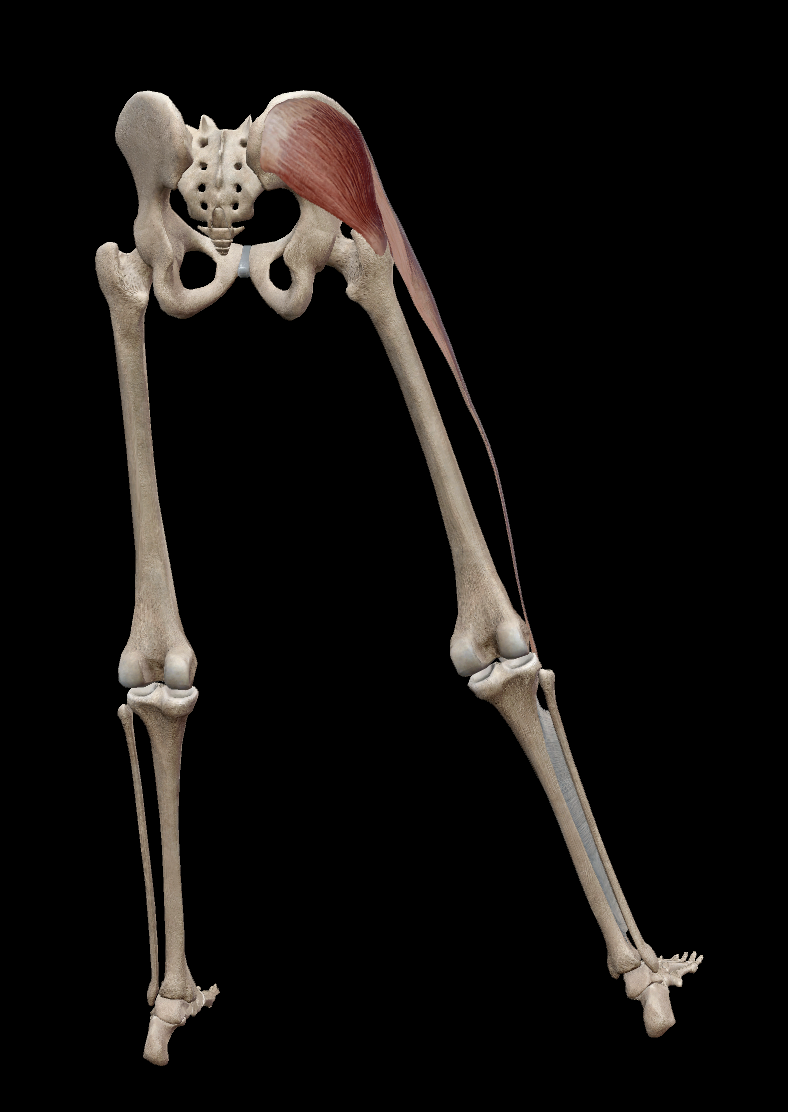
what muscles are responsible for extension at the hip?
gluteus maximus
hamstring muscles
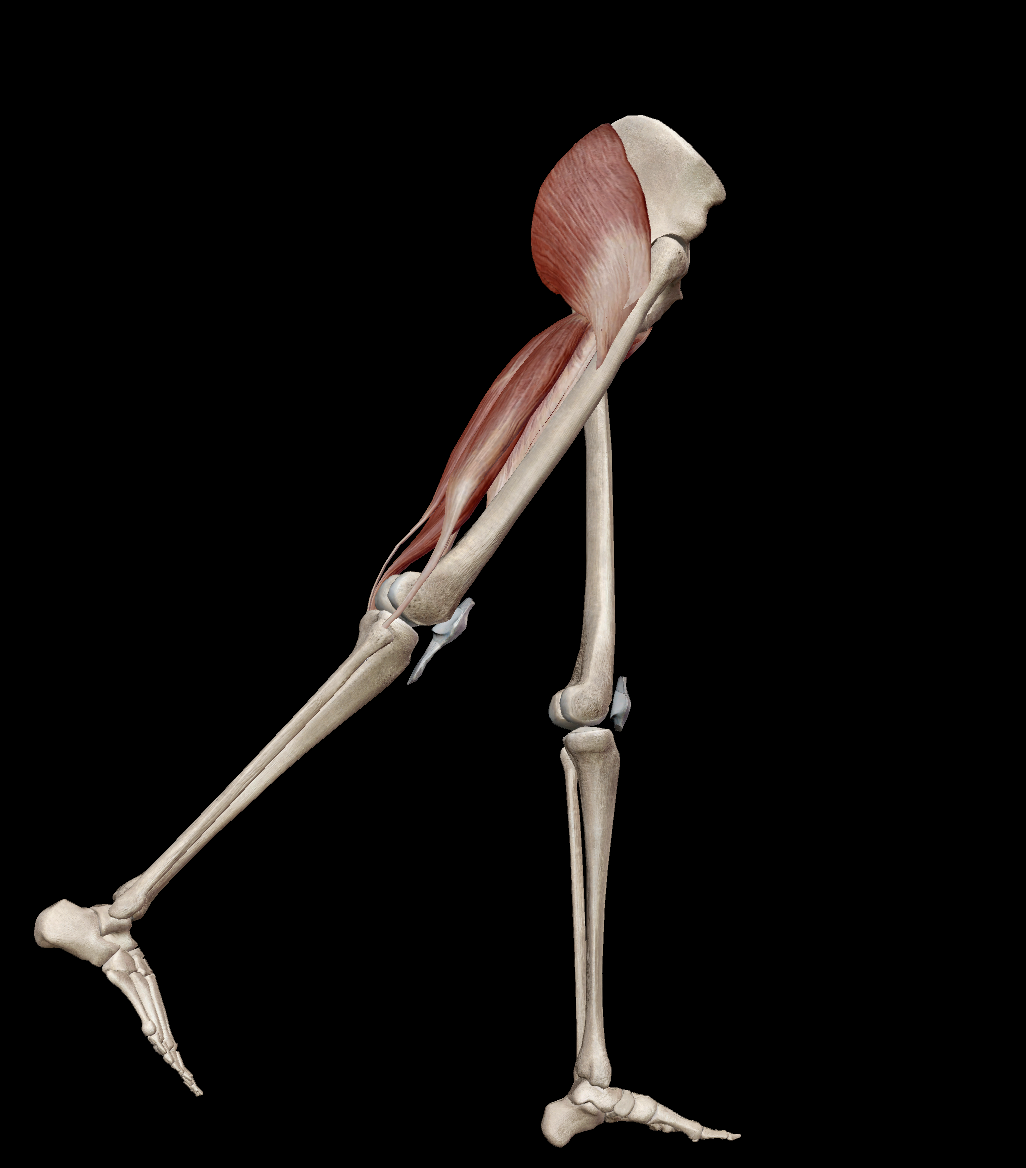
what muscles are responsible for adduction at the hip?
pectineus
adductor longus
adductor brevis
adductor magnus
gracilis

what muscles are responsible for flexion at the hip?
hip flexors (iliacus, psoas)
pectineus
rectus femoris
sartorius
